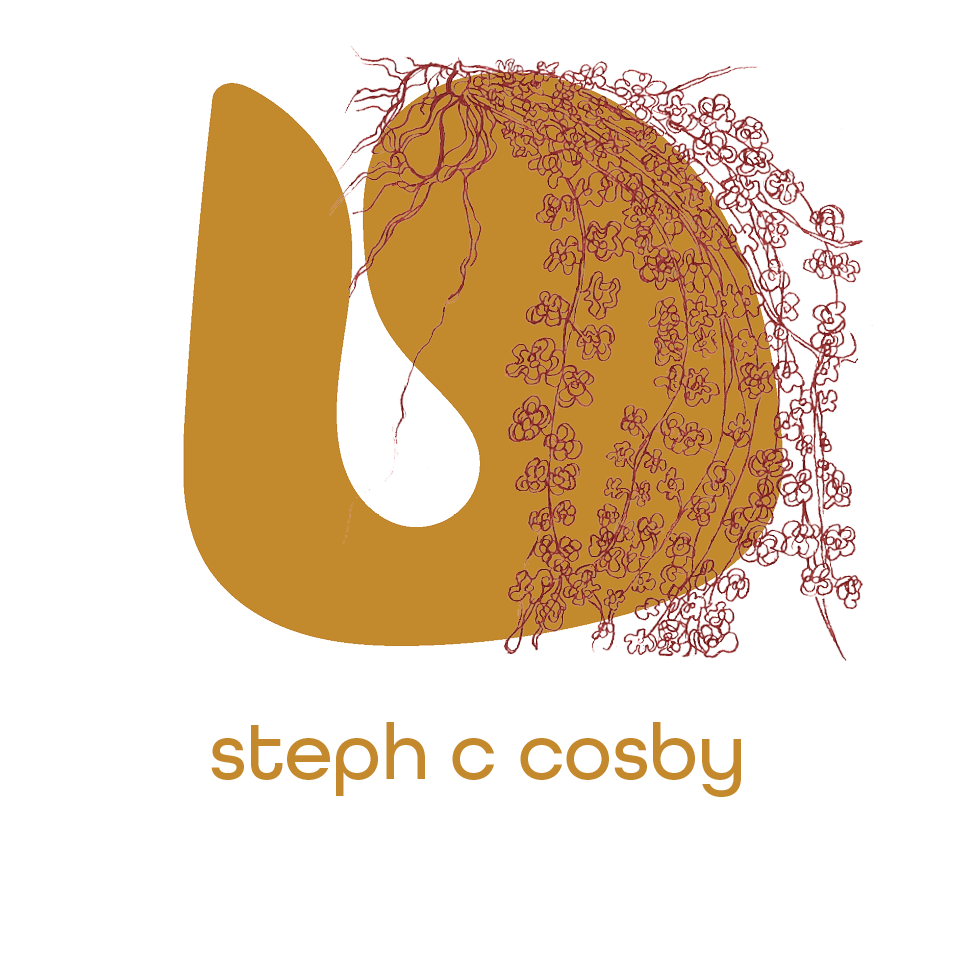Paintings by Stephanie C Cosby
b. 1975, Vitória, Brasil
Lives and works in Corvallis, Oregon, usa
I like to think my first visual and spiritual language came from the iron dust that rode in on light beams and salty ocean air, coating my first home in Brasil across the bay from the Port of Tubarão. I saw, smelled, felt, and tasted its bright, rusty particles as I crawled around exploring.
This iron oxide was formed alongside hematite, magnetite, and quartz in the “iron quadrangle” of Minas Gerais, and is heavily mined, without consent from local indigenous communities. I imagine that my ancestors reached me through this energetically rich iron dust and provided an initiation into the dreamworld where I receive inspiration for paintings, a world I can rely on for my own healing. The human forms, and some of the futurist stories I paint, come from this subconscious dream﹌portal﹌place. The human forms are also painted with ochre pigments, a symbol of their origin story.
In the years prior to these current figural paintings I was making primarily photographic work inspired by unseen realms and the cosmos. At that time I was also deeply engaged in folk herbalism, and plant tending, in my home environment and community. Soon enough, my body cried out for me to bring head and heart down to Earth. The physical ailments that inevitably follow a traumatized past, and the plants themselves, called for the necessity of embodiment.
It was during this survival moment of shifting my focus toward embodiment that these human forms came to me in a dream. I think of the forms as a language I can use to paint outside the confines of heteronormative and neuronormative identity, gender, ethnicity, class, and historical context. I can’t literally paint objectively because all of my personal experiences form the identities I bring with me. However, these abstracted and surreal human forms liberate me, the painter, from all of those constraints; which is an important part of the self-healing that happens when painting. They hold space for physical, psychic, and energetic wound healing.
These human forms that I call “ochre bodies” center around the human body as a place, the body viewed as land and water, and the liberation of all three from colonizing forces. My paintings are also about caregiving. Caregiver is the primary role I play in this life, and I have come to see care as an integral force in this liberation. Perhaps this continuing body of work is autobiographical, or perhaps it is the response in a “call and response” relationship with the dream ﹌portal﹌place I was invited into by my ancestors, the gentle red dust.
2025
